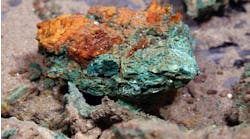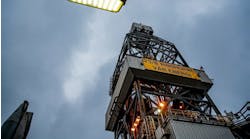Offshore staff
LONDON – Norway’s offshore CO2 emissions intensity, already one of the world’s lowest at 7 kgCO2/boe, should continue to decrease as more of its platforms are electrified, according to Westwood Global Energy Group.
The Troll A platform in 1996 was the first in the sector to use power from shore. Later, Gjøa became the first floating production platform in the North Sea to be powered from shore.
In the same sector, Martin Linge joined the club with what at the time was the world’s longest alternating current cable.
According to Stuart Leitch, senior analyst – Emissions & New Energies at Westwood, the ongoing electrification of Johan Sverdrup in the Utsura High region has created one of the world’s most carbon-efficient oil and gas field operations.
Westwood counts six platforms either fully or part-electrified from shore, including Valhall and Goliat, in the Barents Sea. The six hubs account for nearly 40% of Norway’s 2022 production, but only 10% of its offshore CO2 emissions, with an average emissions intensity of 1.7 kgCO2/boe.
The other non-electrified hubs in Norway have an average emissions intensity of 10.5 kgCO2/boe, also lower than the global average and below Westwood’s forecast for operations on the U.K. Continental Shelf this year of 20.9 kgCO2/boe.
Factors helping electrification in Norway are:
- The regulatory framework, with a long-standing ban on routine flaring.
- The financial impact of emissions charges. Oil and gas operators must account for both the Norwegian Carbon Tax and the EU ETS (the former is historically higher).
- Relative maturity of Norway’s offshore infrastructure and fields. Existing hubs operate more efficiently with higher ullage, and the large number of large fields with long lives helps justify the investment required for electrification projects.
- Power from shore provides a secure renewable energy supply, with 92% of Norway’s power generated from hydro in 2020 and 6% from wind, at a lower cost relative to other European countries.
- Electrification projects can benefit from shared infrastructure. Norway has relatively few operators and stakeholders, with commonality in ownership.
By 2025, Westwood expects a further seven hubs to be electrified, with the Utsira High Phase 2 project due online by 2023. This will electrify Gina Krog, Ivar Aasen and Edvard Grieg with power from shore, with an additional power cable from Gina Krog to Sleipner allowing part-electrification of the Sleipner hub and indirectly Gudrun, via an existing power cable between the two.
The Hywind Tampen floating offshore wind farm in the North Sea will part-electrify the Snorre and Gullfaks platforms by 2023, while Troll B and Draugen should be electrified by 2025.
This means that more than 50% of Norway’s production in 2025 will come from fully or partially electrified platforms, inching the country’s emissions intensity towards 6 kgCO2/boe.
Also under evaluation is Trollvind, a planned 1-GW floating offshore wind farm powering the Bergen region and potentially supporting electrification of Troll and Oseberg through an onshore connection point, potentially starting up in 2027.
Westwood’s current emissions model highlights Oseberg as the region’s largest CO2 emitter by 2028; part-electrification of Oseberg could nearly halve its CO2 emissions, reducing the emissions intensity from 16.8 kgCO2/boe to 9.7 kgCO2/boe.
07.06.2022




